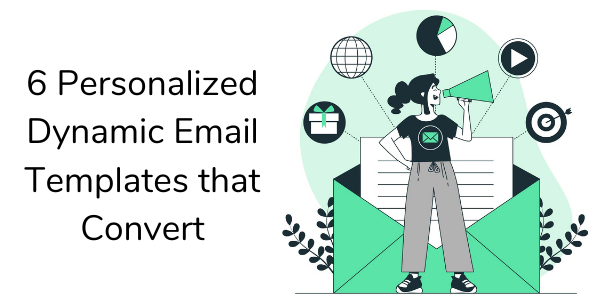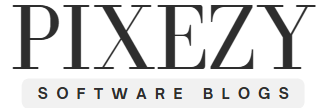Personalized emails can make a big difference in your marketing efforts. They engage your audience and boost conversion rates.
But how do you create these powerful emails? Personalized emails cater to individual preferences and needs. They build stronger connections and trust with your audience. As a result, your readers feel valued and more likely to take action. This approach involves using data to tailor content, subject lines, and call-to-actions.
By doing this, you ensure your emails resonate with each recipient. In this blog, we will explore the key elements of crafting personalized emails that convert. You’ll learn tips and strategies to make your emails stand out and drive meaningful results. Let’s dive into the art of personalized email marketing and start connecting with your audience on a deeper level.
Introduction To Personalized Emails
In the digital age, personalized emails have become a powerful tool. They help businesses connect with their audience in a meaningful way. By tailoring content to individual preferences, companies can enhance engagement and drive conversions. Let’s explore the importance of personalized emails and their impact on open rates.
Importance Of Personalization
Personalization is crucial in email marketing. It shows that you know your customers. This can build trust and loyalty. Here are some key points:
- Increased Engagement: Personalized emails resonate more with readers.
- Better ROI: Targeted messages lead to higher conversion rates.
- Customer Retention: Personalized content keeps customers coming back.
Impact On Open Rates
Open rates are a vital metric in email marketing. Personalized emails can significantly improve this metric. Here’s how:
- Subject Lines: Including the recipient’s name can catch their attention.
- Relevance: Emails tailored to interests are more likely to be opened.
- Timing: Sending emails at the right time increases open rates.
In summary, personalized emails offer numerous benefits. They enhance engagement, drive conversions, and improve open rates. By leveraging personalization, businesses can create more effective email marketing campaigns.
Crafting The Perfect Subject Line
The subject line is the first thing your recipient sees. It’s your chance to grab their attention. A well-crafted subject line can improve your open rates. It can make your email stand out in a crowded inbox.
Using Recipient’s Name
Including the recipient’s name in the subject line can make a big difference. It adds a personal touch. It makes the email feel more relevant. For example:
| Without Name | With Name |
|---|---|
| Don’t miss out on our sale! | John, don’t miss out on our sale! |
The second example feels more direct. It speaks to the recipient individually. Personalization can increase open rates by 26%.
Creating Urgency And Curiosity
Creating a sense of urgency can prompt immediate action. Words like “now” and “today” can be effective. For example:
- Hurry, offer ends today!
- Last chance to save 50%!
Curiosity also drives engagement. Ask a question or tease content. For instance:
- Guess what’s new in your account?
- Can you believe this deal?
These subject lines create a desire to know more. They encourage the recipient to open the email.
Segmenting Your Email List
Segmenting your email list is crucial for creating personalized emails that convert. By dividing your audience into smaller groups, you can send more targeted and relevant messages. This increases engagement and conversion rates. Here, we will explore two key types of segmentation: Demographic and Behavioral Segmentation.
Demographic Segmentation
Demographic segmentation is about grouping your audience based on their characteristics. These characteristics include age, gender, income, education, and occupation. Knowing these details helps tailor your messages to fit their needs.
For example, a young adult might prefer content about trendy gadgets. In contrast, a retired person may enjoy reading about travel deals. By understanding your audience’s demographics, you can craft emails that resonate with them. This makes them more likely to engage with your content.
Behavioral Segmentation
Behavioral segmentation focuses on users’ actions and behaviors. This includes their purchase history, website interactions, and email engagement. Tracking these behaviors helps you understand their preferences and interests.
For instance, if a user clicks on links about fitness gear, you can send them related promotions. If another user often opens your newsletters but never clicks, you might change your email format to spark interest.
By leveraging behavioral data, you can create highly relevant and timely emails. This approach increases the chances of conversions and keeps your audience engaged.

Credit: www.hippovideo.io
Writing Engaging Email Content
Writing engaging email content is crucial for capturing your audience’s attention. Personalized emails create a connection with the reader. They also increase the chance of conversion. Focus on crafting messages that are both relevant and valuable. This will make your emails more effective and engaging.
Personalized Greetings
Start with a personalized greeting. Use the recipient’s name. This small touch makes the email feel more personal. It shows you value the reader. Avoid generic greetings like “Dear Customer.” Instead, opt for “Hi [Name]” or “Hello [Name].” This simple change can increase engagement.
Relevant And Valuable Information
Provide information that matters to your audience. Avoid clutter. Get straight to the point. Use clear and concise language. Offer solutions to their problems. Share tips that are useful. The content should add value to the reader’s life.
Use bullet points for easy reading. Break down complex ideas into simple steps. Ensure the content is relevant to the recipient’s interests. This increases the chances they will read and act on your email.
Utilizing Dynamic Content
Utilizing dynamic content in personalized emails can significantly enhance user engagement. Dynamic content allows you to tailor email content based on individual user data. This means each recipient receives a unique message that resonates with their preferences and behavior.
Tailored Product Recommendations
One effective use of dynamic content is tailored product recommendations. By analyzing user behavior, you can suggest products that match their interests. This not only increases the chances of a purchase but also enhances the user experience. Users appreciate recommendations that feel relevant and timely.
Customized Offers And Discounts
Dynamic content can also be used for customized offers and discounts. By segmenting your audience based on their purchase history, you can send targeted promotions. Personalized discounts make users feel valued and encourage repeat purchases. These offers can be time-sensitive to create a sense of urgency.

Credit: www.youtube.com
Incorporating Visual Elements
Incorporating visual elements in personalized emails can significantly enhance user engagement. Visual content is more appealing and easier to process than text. By adding images, videos, and personalized GIFs, you can make your emails more interactive and compelling.
Images And Videos
Images and videos can make your emails more dynamic and interesting. They help break up large blocks of text and can convey messages quickly. Here are some tips:
- High-quality images: Ensure the images are clear and relevant.
- Video content: Embed short videos to explain complex ideas. Videos can increase click-through rates.
- Alt text: Always use alt text for images. It helps with accessibility.
Using images and videos wisely can lead to higher engagement rates. They make emails visually appealing and informative.
Personalized Gifs
Personalized GIFs add a fun and engaging element to your emails. They can convey emotions and actions effectively. Here are some examples:
- Welcome GIFs: Use a personalized welcome GIF to greet new subscribers.
- Product recommendations: Show personalized product recommendations using GIFs.
- Celebratory GIFs: Celebrate birthdays or anniversaries with personalized GIFs.
Adding personalized GIFs can make your emails more memorable. They create a unique experience for the recipient.
Testing And Optimizing Emails
Testing and optimizing emails is crucial for improving engagement. It helps in understanding what resonates with your audience. Implementing effective strategies can significantly enhance your email marketing results.
A/b Testing Subject Lines
A/B testing subject lines is a powerful strategy. Create two different subject lines for the same email. Send each version to a small segment of your list. Monitor the open rates to see which performs better. Use the winning subject line for the rest of your list. This simple test can greatly improve open rates.
Analyzing Open And Click Rates
Analyzing open and click rates provides insights into your email performance. Open rates show how many people opened your email. Click rates reveal how many engaged with the content. Track these metrics regularly. Identify patterns and trends. Adjust your strategy based on the data. High open and click rates indicate successful emails.

Credit: blog.mystrika.com
Leveraging Automation Tools
Creating personalized emails that convert is a crucial part of any marketing strategy. Leveraging automation tools can make this task easier and more effective. Automation tools help streamline the process, ensuring your emails are relevant and timely. Let’s dive into how you can use these tools to your advantage.
Email Marketing Platforms
Email marketing platforms are a cornerstone for sending personalized emails. They allow you to segment your audience based on various criteria. This ensures your message reaches the right people.
Some popular email marketing platforms include:
- Mailchimp: Known for its user-friendly interface and extensive features.
- Constant Contact: Offers robust tools for email marketing and more.
- SendinBlue: Provides SMS marketing and email automation.
These platforms often come with built-in templates. They also offer analytics to track open rates and conversions. This data helps in refining your strategy over time.
Crm Integration
Customer Relationship Management (CRM) integration is vital for personalized emails. It helps in collecting and organizing customer data. This data can be used to tailor emails to individual preferences.
Benefits of CRM integration include:
- Enhanced customer segmentation.
- Automated follow-up emails.
- Improved customer engagement.
Popular CRMs that integrate well with email marketing platforms are:
- Salesforce: Offers extensive customization and integration options.
- HubSpot: Known for its user-friendly interface and powerful tools.
- Zoho CRM: Provides a comprehensive suite of features at an affordable price.
Integrating your CRM with email marketing platforms can greatly enhance your email campaigns. It ensures your emails are not only personalized but also timely. This leads to higher conversion rates.
Case Studies And Success Stories
Personalized emails have proven to be powerful tools for businesses. They help build connections, increase engagement, and drive conversions. In this section, we will explore case studies and success stories. Real-world examples and lessons learned can offer valuable insights.
Real-world Examples
Let’s look at some companies that have used personalized emails effectively.
Company X used personalized subject lines. They saw a 50% increase in open rates. Customers felt more valued, leading to higher engagement.
Another example is Company Y. They used customer data to tailor email content. This approach resulted in a 30% increase in click-through rates. It showed customers relevant products, making them more likely to buy.
Lessons Learned
There are key takeaways from these examples. First, personalization boosts email performance. Using names or specific details grabs attention.
Second, segmenting your audience is crucial. Group customers based on behavior or preferences. This allows for more targeted content. People respond better to emails that meet their needs.
Third, testing is important. Try different subject lines, content, and send times. See what works best for your audience. Continuous improvement leads to better results.
Finally, respect your customers’ data. Use it responsibly to build trust. Transparency about data usage fosters long-term relationships.
By learning from these examples, you can create personalized emails that convert. The key is to be genuine and customer-focused.
Conclusion And Next Steps
Personalized emails can boost your conversion rates significantly. Tailored content speaks directly to your audience’s needs and preferences. So, how can you ensure your emails are effective? Let’s explore the conclusion and next steps.
Implementing Strategies
Start by segmenting your email list. Group subscribers by demographics, behavior, or past interactions. This helps you send relevant content to each group. Use a catchy subject line. It grabs the reader’s attention and increases the open rate.
Next, personalize the email body. Include the recipient’s name and reference their past actions or purchases. This makes the email feel more personal and engaging. Use dynamic content. Change parts of the email based on the recipient’s data. This ensures each email is highly relevant.
Test different strategies. Use A/B testing to compare different subject lines, email designs, and content. See what works best for your audience. Gather feedback. Ask your subscribers for their preferences and suggestions. This helps you improve future emails.
Continuous Improvement
Review your email performance regularly. Track metrics like open rates, click-through rates, and conversion rates. Use this data to identify areas for improvement. Optimize your emails based on performance data. Make small changes and see how they impact your results.
Stay updated with industry trends. Email marketing is always evolving. Keep learning and adapting your strategies. Train your team. Ensure everyone involved in email marketing understands the best practices. This helps maintain consistency and quality.
Invest in the right tools. Email marketing platforms offer features like automation, segmentation, and analytics. Choose a tool that fits your needs and budget. Monitor deliverability rates. Ensure your emails reach the inbox and not the spam folder.
Continuously improve your email list. Remove inactive subscribers and keep your list clean. This improves your overall email performance. Remember, personalized emails that convert require ongoing effort. Keep refining your strategies for the best results.
Frequently Asked Questions
What Are Personalized Emails?
Personalized emails are tailored messages sent to specific recipients. They use personal data to create a customized experience, improving engagement.
Why Do Personalized Emails Convert Better?
Personalized emails convert better because they resonate with the recipient. They address individual needs and preferences, making the content more relevant and compelling.
How To Create Effective Personalized Emails?
To create effective personalized emails, use recipient data like name, preferences, and past behavior. Segment your audience and craft targeted content for each segment.
What Tools Help In Personalizing Emails?
Tools like Mailchimp, HubSpot, and ActiveCampaign help in personalizing emails. They offer features to segment audiences and automate personalized content.
Conclusion
Personalized emails can greatly improve your conversion rates. Focus on creating relevant content. Use the recipient’s name and tailor the message. Keep your subject lines catchy and concise. Test different approaches to see what works best. Always analyze your results to refine your strategy.
Building a connection with your audience is key. Show that you understand their needs and preferences. Personalization makes your emails stand out. Start crafting personalized emails today. Watch your engagement and conversions grow.

I am a passionate digital marketer with a strong expertise in SEO and article writing. With years of experience in crafting compelling content and optimizing it for search engines, I help businesses enhance their online visibility and drive organic traffic. Whether it’s creating engaging blog posts or implementing effective SEO strategies, I am dedicated to delivering results that make an impact.
